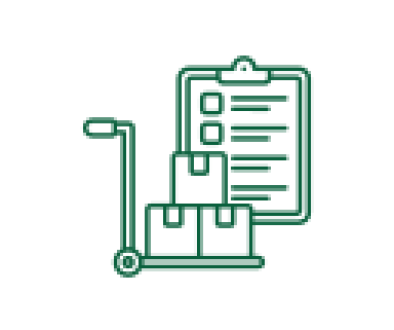
Innovation Packaging
The problem – Plastic Pollution
Plastic pollution poses one of the most urgent threats to Earth’s natural ecosystems.
Without action, plastic waste entering waterways (and ultimately the ocean) could climb to 22 million tonnes annually within a decade, potentially reaching 58 million tonnes.
Currently, 40% of all plastic produced is for single-use packaging. Despite the mounting environmental costs, global plastic production is projected to more than double by 2050.
Widespread usage of single-use packaging containers has resulted in a heavy burden on the environment, and the management of packaging waste is facing a crisis due to two unresolved challenges:
- Recyclability – Large amounts of packaging produced today cannot be recycled in existing recycling systems.
- Packaging recycling and leakage – In Europe the plastic-recycling rate reported is approximately 40%, with 80% for paperboard, and 75-80% for metal and glass. Global leakage is estimated at around 19%. Despite the potential for plastic to be reused and recycled, most global plastic waste goes into incineration (25%) and landfills (40%).
Sustainability and consumer behaviour
Over the past decade, the global packaging industry has enjoyed strong growth, driven by shifts in choice of substrates and expansion of new end-markets.
It is more important than ever for companies to have both a short- and long-term plastics strategy, that can minimise the impact on the planet and get ahead of future regulation. Concern around single-use packaging waste – is combining with other powerful trends to drive major changes in consumer packaging.
Thanks to a shift towards sustainable behaviour, we are entering a new era of innovative packaging.
Packaging that is sustainable, functional, useful and innovative are the foundations of consumer trends for the future.
Securing Competitive Advantage
Companies that manage to develop new, sustainable packaging solutions will secure a major market advantage. Customer demands in relation to sustainability are on the rise. One study found that 55% of consumers worry about packaging’s environmental impact, especially due to marine pollution and resource depletion. So it is very much a mainstream concern.
Sustainable packaging concepts that combine innovative materials and design and that reduce consumption of materials will be winners in the future.
Changing the behaviour of big business and consumers
Some packaging often seems vital – until it isn’t.
In the UK the 5 pence charge on plastic bags brought down their use by 86% with customers quickly adopting reusable options.
The UK Plastic Tax
The UK government introduced a new tax on 1 April 2022 on plastic packaging manufactured in, or imported into the UK that does not contain at least 30% recycled plastic. The rate of tax is £200 per metric tonne of plastic packaging. This is designed to provide a financial incentive for businesses to use recycled plastic in the manufacture of plastic packaging. Alongside this, businesses will have to provide robust evidence and keep records.
According to the Government, this new tax is expected to impact around 20,000 manufacturers and importers of plastic in the UK.
Packaging Solutions
Almost all of the top 100 FMCG companies have made bold declarations and commitments to drive sustainability over the coming years.
There are three main areas of activity:
- Committing to higher/ full recyclability is the most widely adopted practice, accounting for 60% of commitments
- Reduction in plastics usage 26% of commitments
- The innovation and promotion of change in the use of packaging coming in third at 14% of commitments
Circular economy and innovation
In a circular economy, upstream innovation is about tracing a problem back to its root cause and tackling it there.
This means that rather than working out how to deal with huge amounts of waste, we prevent it from being created in the first place. This innovation requires a shift in mindset, rethinking how products and services are sold without creating waste.
This upstream innovation mindset can be used to achieve three key circular economy strategies – elimination, reuse, and material circulation. Where elimination and reuse are fairly self-explanatory, material circulation refers to recycling or through biological process composting.
Redesigning packaging
By redesigning packaging, plastic packaging can be completely removed.
Using Biodegradable Materials
Biodegradable packaging is one of the key innovations, and has been gaining traction over the past few years. Single-use plastics, such as polythene bags and straws are intended to be thrown away immediately after use.
By engineering biodegradable single use products companies can ensure convenience is blended with environmental responsibility.
Biodegradable packaging involves the use of starch, cellulose and biopolymers. In addition, plant-based packaging, such as sugarcane, coconut, hemp, and cornstarch can be used as replacements.
To enable the use of paper-based packaging, some brands have changed typically liquid products, such as soaps, into dry solids – eliminating the need for plastic bottles.
Biodegradable Packaging Example: Earth Breeze
Earth Breeze is a laundry detergent company that offers a subscription based service.
They have redesigned detergent from a liquid to a sheet. This has enabled them to drastically reduce the amount of packaging required, compared to traditional liquid detergent. They also use 100% biodegradable ink and cardboard packaging. So there’s no need for plastic.
They claim this reduces carbon emissions from transport by 94%. Standard liquid detergent can also be up to 90% water, therefore this product reduces water use.
This innovative redesign of a product has reduced the company’s carbon footprint.
Biodegradable Packaging Example: Notpla
Notpla has developed a biodegradable takeaway box made from seaweed, which Just Eat is using to replace plastic containers. These boxes are designed to be fully compostable in a home compost or general waste within a few weeks. Just Eat is trialling these boxes with restaurant partners across the UK, aiming to reduce plastic waste in the takeaway industry.
Improving recyclability
Eliminating plastic at source and changing people’s mindsets should be the number one priority. However, where this is not possible recycling and ensuring plastics are biodegradable is a good second step.
Recycling is at the heart of the circular economy, however only 9% of plastic waste is currently recycled. Lots of brands claim to have recyclable packaging (despite the fact that in certain areas, the facilities to process so-called ‘recyclable’ materials simply don’t exist), they’re having trouble producing recycled packaging. This comes down not only to the low availability of top-notch recycled plastic due to the purportedly reduced quality of recycled resin (eco-responsible packaging is tricky to engineer, and different types of plastics can’t be recycled as one) but also due to concerns over food safety.
LAM’ON
LAM’ON are a Bulgarian start-up that produce 100% compostable and biodegradable lamination film and foil packaging. The foil is made of polylactic acid, derived from corn. The use of silver nanoparticles as antibacterial additives in the foil makes it a suitable solution for food packaging. This is an eco-friendly alternative to cling film, which is not recyclable in any way.
Grown
Mycelium packaging, made from the root structure of mushrooms, is a sustainable alternative to traditional packaging materials like polystyrene. It’s a biodegradable and compostable material, offering a lower environmental impact than plastics. Grown has received recognition for their innovative use of mycelium in packaging, including winning the German Sustainability Award in 2023.
A closer look at Mycelium
Mycelium packaging is made from renewable resources (agricultural waste) and is completely biodegradable, breaking down naturally without harmful residues.
It has a significantly lower carbon footprint compared to plastic production, with some sources claiming up to 90% less carbon emissions.
Mycelium can be moulded into various shapes and sizes, making it suitable for a wide range of products, from electronics to perfume bottles.
It’s lightweight, water-resistant, and offers good shock absorption, making it a practical and protective packaging solution.
While initial costs may be higher, the long-term benefits and potential for cost savings through reduced waste and compliance with environmental regulations are significant.
Consumers are increasingly seeking sustainable products, and mycelium packaging allows companies to showcase their commitment to environmental responsibility.
A Global problem needing a global solution
Plastic is a global problem, and it demands a global solution. The world can adapt to reduce and even eliminate plastic pollution, and this needs to be driven by collaboration between governments, businesses, and consumers. All three have vital roles to play in this journey to sustainable packaging. Large producers and consumers of plastics should not wait for international standards to be set, but instead actively innovate and rethink the way plastic is used.
Life Cycle Analysis (LCA)
Every business and product / service is unique. The scope of an LCA also varies, it could include the entire operation or simply be an assessment of one product or service.
We can help you:
- Collect data from suppliers, crafting supplier data requests and ensuring you receive the information you need.
- Create a Life Cycle Inventory (LCI), this can be the most complex part of a Life Cycle Analysis, if the scope of the assessment is large.
- Develop metrics and a deep understanding of your supply chain, showing you where there is high risk and where the negative impacts are within the life cycle.
- Provide recommendations to help you to continually improve your supply chain.
More on Life Cycle Analysis.


